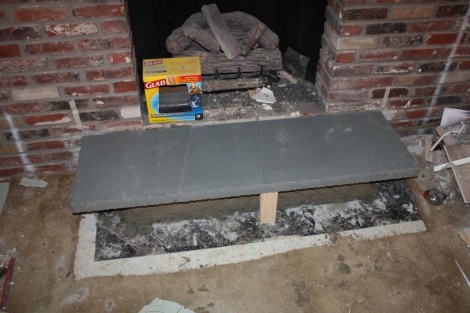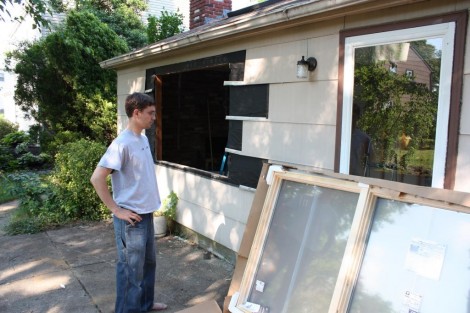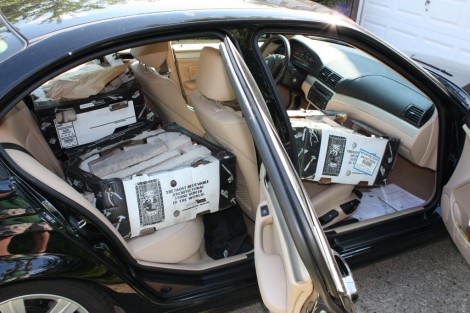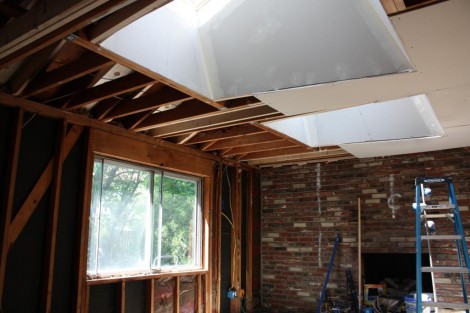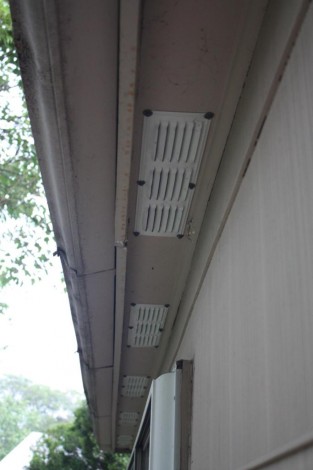The hearth of our old fireplace was made of the same bricks that make up the wall. For the new fireplace we ordered a nice big piece of Pennsylvania bluestone. The 5’x18″x2″ piece of bluestone weighed in at about 250lbs, so once agian I called upon my friend Greg to not only transport the stone home, but to also give me a hand installing it.
I left a decent bit of the old brick hearth behind, so that I wouldn’t need to use that much mortar to set the stone in. Once I decoded the nomenclature of the various Quickrete products they sell at Lowes, I was able to mix up some mortar using a 3-1 ratio of sand (All-Purpose as opposed to the Play, and Medium sand) and Type N Masonry cement. I mixed it with some water till it was reasonably thick but still workable. I’ve read that the most common mistake first-timers make when mixing cement is to add to much water, so I tried to avoid that. Once the mortar was mixed (which was a surprising amount of work) I spread it on top of the remaining bricks, and then lowered the stone into place. I used a small piece of 2×4 to keep the piece level while it setup.
